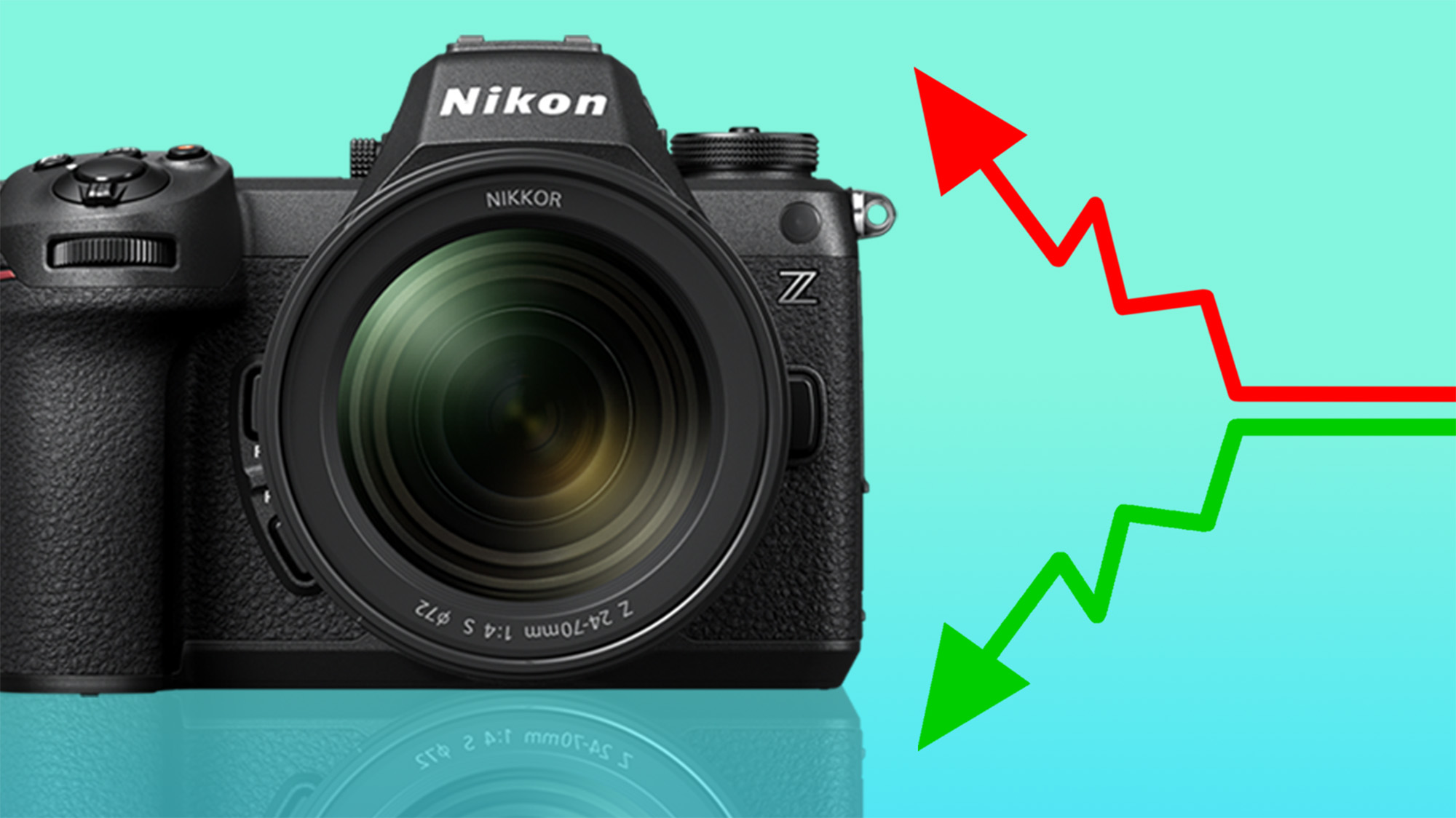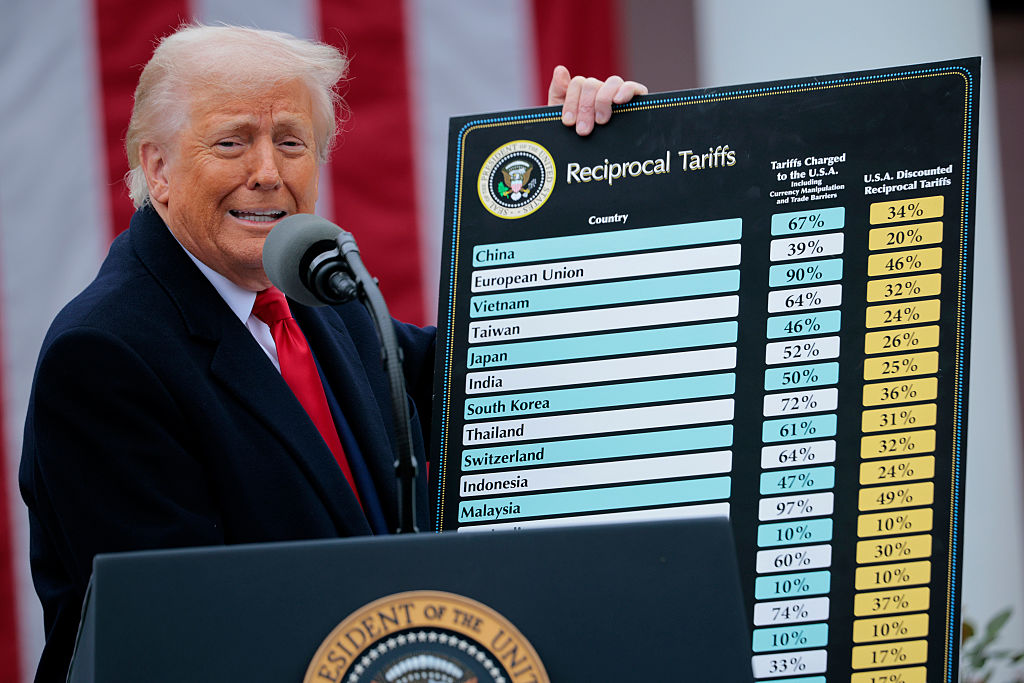How could Trump tariffs affect camera prices?
What the Scrooge McDuck is going to happen to camera prices now that Donald Trump has imposed global reciprocal tariffs?

I’m not an economic expert, but I certainly don’t think I’m alone in wondering how President Trump’s much-talked-about tariffs will impact the imaging industry. Especially because so few brands manufacture their wares in the United States. We asked the biggest camera brands what they think but, now we know what we're actually dealing with, here's my fresh take.
It’s difficult to talk about something like this without getting political, so I’m going to try to spit the facts as best I can. After all – no matter our political leanings – I’m sure we’re all interested in how the industry is going to be affected over the coming months and years. In short, I’m going to try and make this as apolitical as possible…
All of this follows the US President’s press conference from the White House Rose Garden where he revealed his long-awaited list of reciprocal tariffs.
It’s important to note that the charts displayed by POTUS feature two columns: “Tariffs Charged to the USA including Currency Manipulation and Trade Barriers”, and “USA Discounted Reciprocal Tariffs”. The former isn’t quite what it seems, with The Guardian calling it: “Trump-defined and 'include currency manipulation and trade barriers'”.
With that in mind, it’s the second column that’s of interest to the industry.
What is a tariff?

A tariff is a tax that a country can impose on imported products and raw materials, which increases costs for the manufacturer. The fear for goods hit by tariffs is that companies will then raise prices for the consumer to help mitigate increased costs or reduced imports.
According to The Washington Post: "Trump has praised import duties (...) and has suggested they can help raise public revenue, promote American products and jobs, and serve as a bargaining chip to extract concessions from other countries."
Get the Digital Camera World Newsletter
The best camera deals, reviews, product advice, and unmissable photography news, direct to your inbox!
For example, a company could seek to get around the tariffs by moving its manufacturing to the US – which, in theory, would create US jobs. Additionally, US consumers will be incentivized to buy US-made products that are comparatively cheaper than those produced overseas, boosting the economy.
The counterpoint is that this doesn’t account for US-based manufacturers that rely on imported raw materials (should the tariffs force those materials to rise in price). Nor for how other countries will respond.
If they, too, retaliate by imposing their own tariffs – causing a trade war – this could then impact US manufacturers and suppliers of raw materials that rely on exports, and may push domestic prices up anyway.
How will tariffs affect camera manufacturers?
When it comes to the imaging industry, the US is not a hub for consumer camera and optics manufacturing. As such, most camera companies will surely be affected by these tariffs – and that’s before you account for an impact on raw materials.
Tariffs are set to hit their respective countries on April 05 and April 09, the former being reserved for those hit with a baseline tariff of 10% (which includes the UK and Australia).
Mirrorless Rumors published a rather handy list of major photography brands and where they manufacture / assemble their cameras and lenses. If we’re strictly talking consumer brands, it's only Red and Blackmagic that produce products stateside – and even then, the Australia-based Blackmagic only produces some products in the USA.
Unsurprisingly, most cameras and lenses come out of Asia, with examples of Trump’s discounted reciprocal tariffs being 24% for Japan (Canon, Nikon, Fujifilm), 34% for China (Canon, Sony, Fujifilm, Panasonic, OM System) 36% for Thailand (Canon, Nikon, Sony), 24% for Malaysia (Canon, Panasonic) and 46% for Vietnam (OM System).
And in the case of Leica and Hasselblad, which manufacture a lot of their goods in Europe, the EU will be hit with 20% tariffs.
How will Trump's tariffs affect camera prices?
Whether or not the Trump administration is right about the potential positives for the US and camera brands shift manufacturing to the States in droves, short term, it's certainly possible that camera prices could be affected. And when prices increase, they rarely tend to come back down.
But as DJI told us: “Tariffs are one of several factors that we consider in our comprehensive pricing strategy (...) Our commitment to closely monitoring relevant policies and economic indicators is unwavering, as is our dedication to providing high-quality products at the best possible price."
In short, I think it's worth remembering that no tech manufacturer wants to put off consumers.
And sales are a different matter altogether. Economic uncertainty could encourage consumers to make big purchases now, for fear of potential price hikes. On the flipside, economic uncertainty can put buyers off entirely as they save their hard-earned in case of a rise in the cost of living.
But camera manufacturers are adaptable and could look to shift their area of focus. For example, rising costs could mean less interest in the high-end enthusiast market, but embolden the resurrection of the compact camera, should consumers turn to cheaper systems.
And what about the film boom? Consumers could decide that already expensive film and development is no longer a viable option. It could also receive another boost, should photographers look towards the secondhand market for savings. Heck, maybe we’re about to witness the resurrection of the DSLR – you heard it here first!
Ultimately, nobody can tell what's going to happen. But my point is that the industry is well-positioned to adapt. Economic uncertainty comes and goes, but I’m confident the photography and videography industry will continue to churn out fantastic cameras and lenses, and photographers will continue to take great photos.
You might also be like...
Recently in the news: Photographer who took iconic Trump assassination attempt photo opts to FIGHT! FIGHT! FIGHT! AP White House ban. Here's my critique of Melania Trump’s official White House photo. And if you're tired of tariffs, here are my top tips for landscape photography.

Mike is Digital Camera World's How To Editor. He has over a decade of experience, writing for some of the biggest specialist publications including Digital Camera, Digital Photographer and PhotoPlus: The Canon Magazine. Prior to DCW, Mike was Deputy Editor of N-Photo: The Nikon Magazine and Production Editor at Wex Photo Video, where he sharpened his skills in both the stills and videography spheres. While he's an avid motorsport photographer, his skills extend to every genre of photography – making him one of Digital Camera World's top tutors for techniques on cameras, lenses, tripods, filters and other imaging equipment – as well as sharing his expertise on shooting everything from portraits and landscapes to abstracts and architecture to wildlife and, yes, fast things going around race tracks...
You must confirm your public display name before commenting
Please logout and then login again, you will then be prompted to enter your display name.
